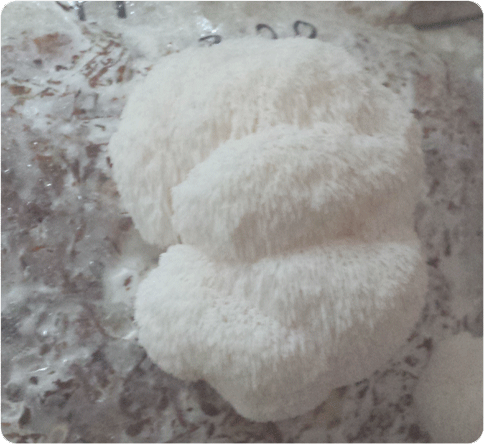Did you know that there’s been a fair amount of research into lion’s mane benefits? And the reported findings are certainly worth sharing
We are a big fan of lion’s mane mushroom here at Fungi Ally. We grow this furry-looking friend to sell fresh because it is a choice edible. We also provide the mushroom as an extract for enhanced well being. For those who want to grow their own lion’s mane mushrooms at home, we offer a variety of spawn and even a lion’s mane grow kit.
One of the reasons we’re a big fan of this mushroom is because there’s a slew of researching on lion’s mane benefits and they seem pretty powerful to us. Today we are sharing some information collected from our research on lion’s mane mushroom. Some of these reports may even interest you in trying this amazing mushroom for yourself, if you haven’t already.
Lion’s mane benefits: Antioxidants
The study Antioxidant and Anti-Osteoporotic Activities of Aromatic Compounds and Sterols from Hericium erinaceum from 2017 involved isolating parts of the fruiting bodies for sterols and aromatic compounds. As the study states about the results of the testing, “These results suggested that H. erinaceum could be utilized in the development of natural antioxidant and anti-osteoporotic nutraceuticals and functional foods.”
Lion’s mane benefits: Neurological Health
The study Lion's Mane, Hericium erinaceus and Tiger Milk, Lignosus rhinocerotis (Higher Basidiomycetes) Medicinal Mushrooms Stimulate Neurite Outgrowth in Dissociated Cells of Brain, Spinal Cord, and Retina: An In Vitro Study took a look at neurodegenerative disease, which impacts nearly 100 million people worldwide.
The study states, “Hericium erinaceus is one of the well-established medicinal mushrooms for neuronal health. It has been documented for its regenerative capability in peripheral nerve.”
It continued to say, “H. erinaceus extract at 50 µg/mL triggered neurite outgrowth at 20.47%, 22.47%, and 21.70% in brain, spinal cord, and retinal cells.”
As a quick note, neurite outgrowth is defined as a process where developing neurons “produce new projections as they grow in response to guidance cues.”
Lion’s mane benefits: Anti-inflammation impact on inflammatory bowel disease (IBD)
The study Anti-Inflammatory Effects of Ethanol Extract of Lion's Mane Medicinal Mushroom, Hericium erinaceus (Agaricomycetes), in Mice with Ulcerative Colitis “investigated the anti-inflammatory activity of ethanol extracts of Hericium erinaceus in the inflammatory bowel disease (IBD) model.”
According to the results of the testing:
“Mechanistically, HEEE ameliorated colitis not only by suppressing the production of inflammatory mediators including tumor necrosis factor-α, interleukin (IL)-1β, and IL-6 in colon tissues but also by adjusting the production of nitric oxide, malondialdehyde, and superoxide dismutase in serum to suppress the oxidative stress. These results suggest that HEEE can be applied as a protective agent in the treatment of IBDs.”
There are many other benefits of lion’s mane mushrooms to share but we will stick with those main three studies for today. We will be sure to update this information with more research and new studies, so stay tuned.
And if you would like to incorporate lion’s mane mushrooms into your world, learn more about our lion’s mane extract and buy today. And if you want to grow lion’s mane at home, then read on for some exciting information.
Get lion's mane benefits at home when you grow your own! 3 great options to try
Want to grow your own and reap the lion's mane benefits? We recommend a few different methods to try for growing lion's mane mushrooms. These include the use of supplemented sawdust spawn or plug spawn. The supplemented sawdust spawn will be best for growing lion's mane on totems made of beech wood. Totems are easy to put together and you can do so with scraps of wood from your yard. Totems can be as simple as finding three pieces of wood that fit well together, securing them with a few nails, and inoculating that. Or, you can go about creating what we consider to be our ideal totems for growing mushrooms. Here's a look at those details: Totems are best made with large diameter logs; Typically oak, beech or sugar maple logs with a diameter greater than 8 inches. Start with a 3' log. Cut one part about 1.5' long, the second 1.3' long, and a third section about 2" long. Find a favorable place for cultivation, ideally somewhere that is shaded year round by conifer trees. The north side of houses and sheds can work as well. Next, put the 1.5' log on the ground and put the second 1.3' log on top, spread some sawdust with mycelium in between the log pieces, then secure it with 2-3 nails. Take the 2" piece of wood and attach it to the 1.3' log with 2-3 nails. You have now made a mycelium sandwich! The log should be reassembled to how it was before you cut it, but now with mycelium in the middle. The mycelium grows up and down through the log sections. Within one-year the log should begin to fruit. With the large diameter size it takes the mushroom awhile to eat through a totem, so they can continue to fruit for over 10 years! Note that you can also use plug spawn in totems or log inoculations. You would simple insert the plug spawn into the sides of the logs instead of using the supplemented sawdust. Do you want an even easier way to grow lion's mane mushrooms at home? Check out our lion's mane mushroom grow kit! We love the lion's mane benefits and hope you do, too!Resources for this article on lion's mane benefits:
- Antioxidant and Anti-Osteoporotic Activities of Aromatic Compounds and Sterols from Hericium erinaceum.
- Anti-Inflammatory Effects of Ethanol Extract of Lion's Mane Medicinal Mushroom, Hericium erinaceus (Agaricomycetes), in Mice with Ulcerative Colitis.
- Lion's Mane, Hericium erinaceus and Tiger Milk, Lignosus rhinocerotis (Higher Basidiomycetes) Medicinal Mushrooms Stimulate Neurite Outgrowth in Dissociated Cells of Brain, Spinal Cord, and Retina: An In Vitro Study.
- Neurite Outgrowth Assays

